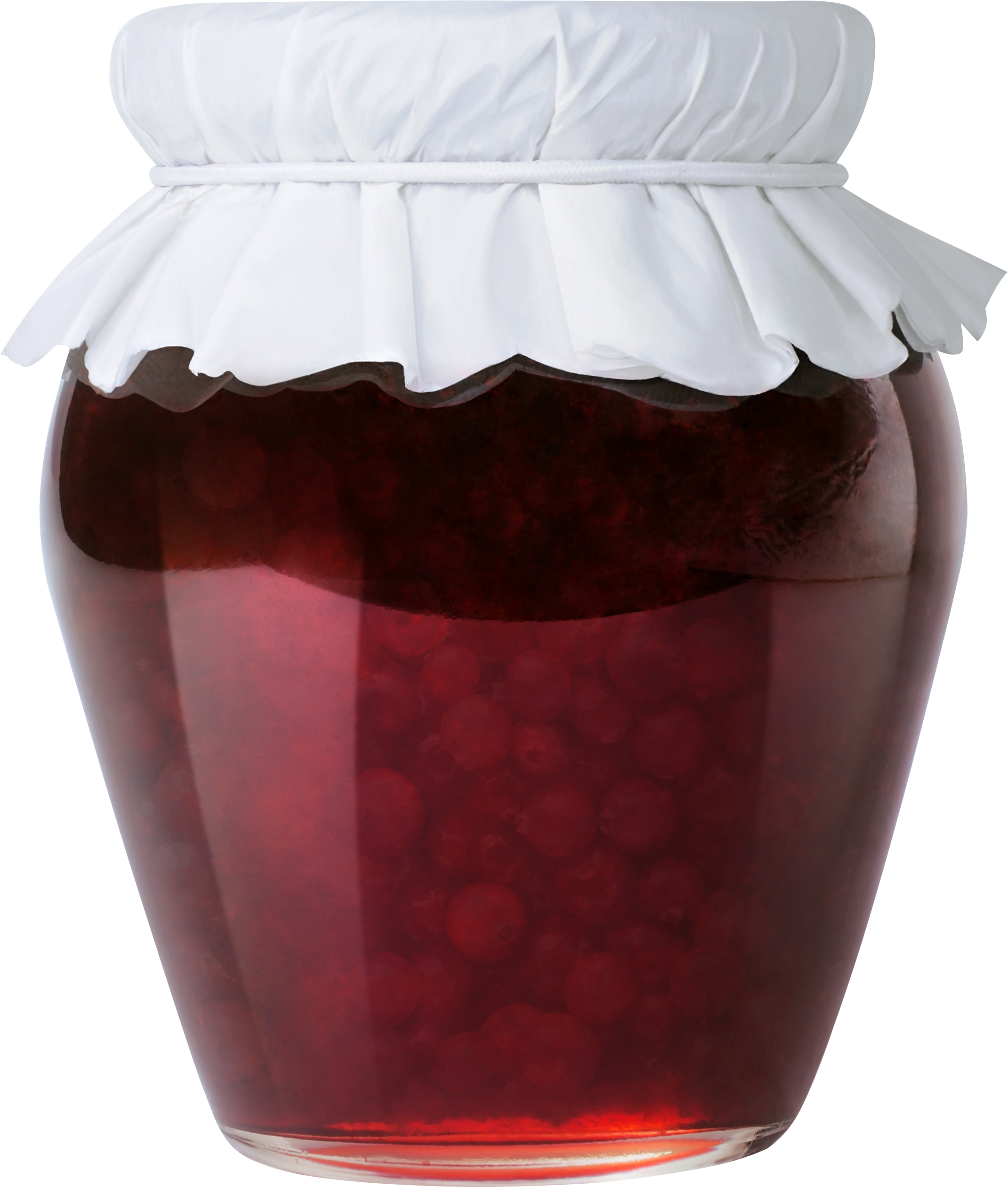
This image has format transparent PNG with resolution 2141x2522.
You can download this image in best resolution from this page and use it for design and web design.
Jam PNG with transparent background you can download for free, just click on download button.
Jam typically contains both the juice and flesh of a fruit or vegetable, although one cookbook defines it as a cooked and jelled puree. The term "jam" refers to a product made of whole fruit cut into pieces or crushed, then heated with water and sugar to activate its pectin before being put into containers:
"Jams are usually made from pulp and juice of one fruit, rather than a combination of several fruits. Berries and other small fruits are most frequently used, though larger fruits such as apricots, peaches, or plums cut into small pieces or crushed are also used for jams. Good jam has a soft even consistency without distinct pieces of fruit, a bright color, a good fruit flavor and a semi-jellied texture that is easy to spread but has no free liquid." – Berolzheimer R (ed) et al. (1959)
Pectin is mainly D-galacturonic acid connected by α (1–4) glycosidic linkages. The side chains of pectin may contain small amounts of other sugars such as L-fructose, D-glucose, D-mannose, and D-xylose. In jams, pectin is what thickens the final product via cross-linking of the large polymer chains.
Freezer jam is uncooked (or cooked less than 5 minutes), then stored frozen. It is popular in parts of North America for its very fresh taste.
Recipes without added pectin use the natural pectin in the fruit to set. Tart apples, sour blackberries, cranberries, currants, gooseberries, Concord grapes, soft plums, and quinces work well in recipes without added pectin.
Other fruits, such as apricots, blueberries, cherries, peaches, pineapple, raspberries, rhubarb, and strawberries are low in pectin. In order to set, or gel, they must be combined with one of the higher pectin fruits or used with commercially produced or homemade pectin. Use of added pectin decreases cooking time.
In Canada, fruit jam is categorized into two types: fruit jam and fruit jam with pectin. Both types contain fruit, fruit pulp or canned fruit and are boiled with water and a sweetening ingredient. Both must have 66% water-soluble solids. Fruit jam and fruit jam with pectin may contain a class II preservative, a pH adjusting agent or an antifoaming agent. Both types cannot contain apple or rhubarb fruit.
Though both types of jam are very similar, there are some differences in fruit percent, added pectin and added acidity. Fruit jam must have at least 45% fruit and may contain added pectin to compensate for the natural pectin level found in the fruit. Fruit jam with pectin need only contain 27% fruit and is allowed to contain added acidity to compensate for the natural acidity of the fruit.
Jam is created by boiling fruit, fruit pulp or canned fruit with water to and adding a sweetening ingredient. In Canada, jam must contain at least 45% of the named fruit and 66% water soluble solids. Jam may contain small amounts of pectin, pectinous preparation or acid ingredients if there is a deficiency in natural pectin. In Canada, Jam may also contain a class II preservative, a pH adjusting agent, an antifoaming agent and cannot contain any apple or rhubarb.
In this page you can download free PNG images: Jam PNG images free download